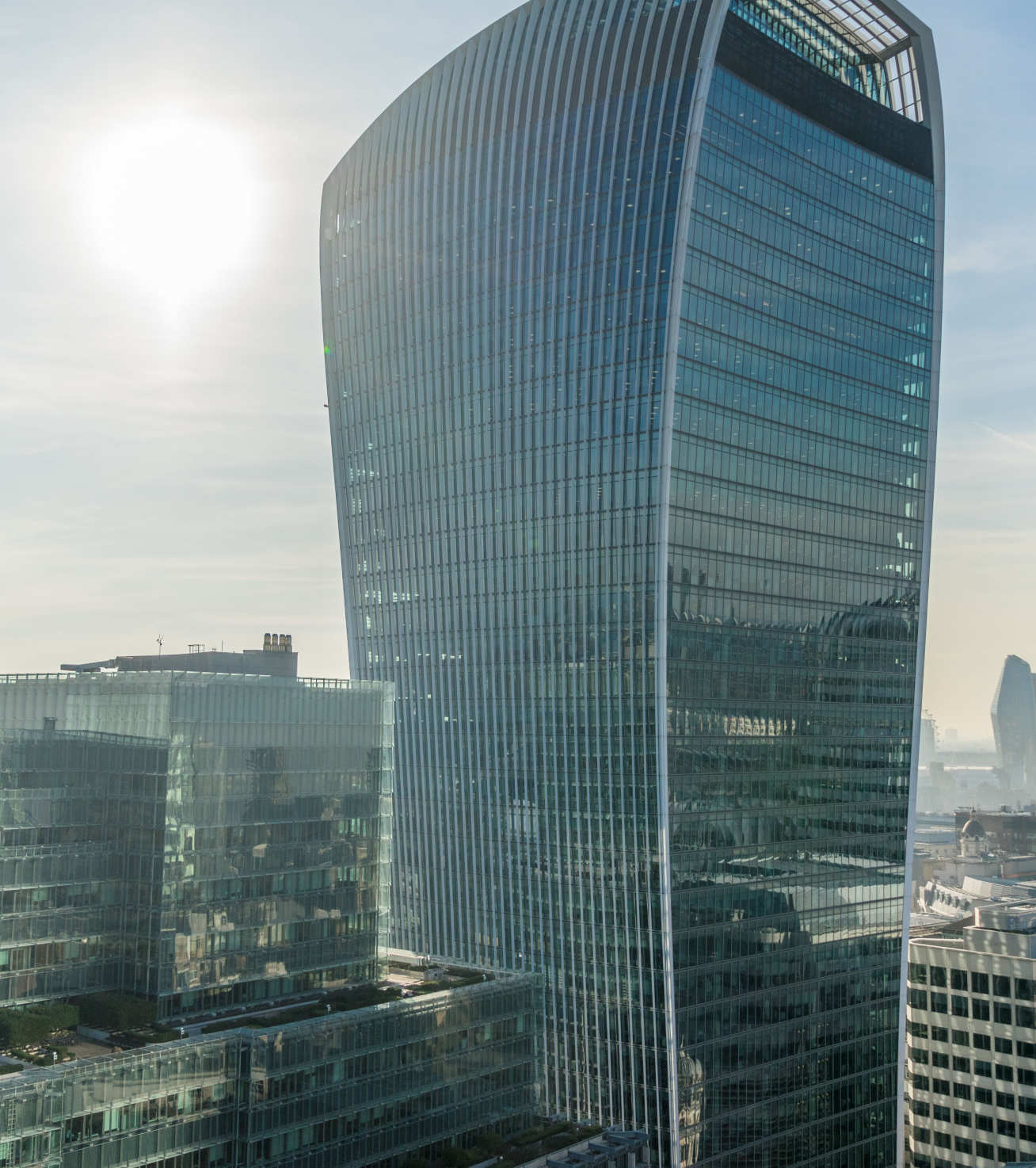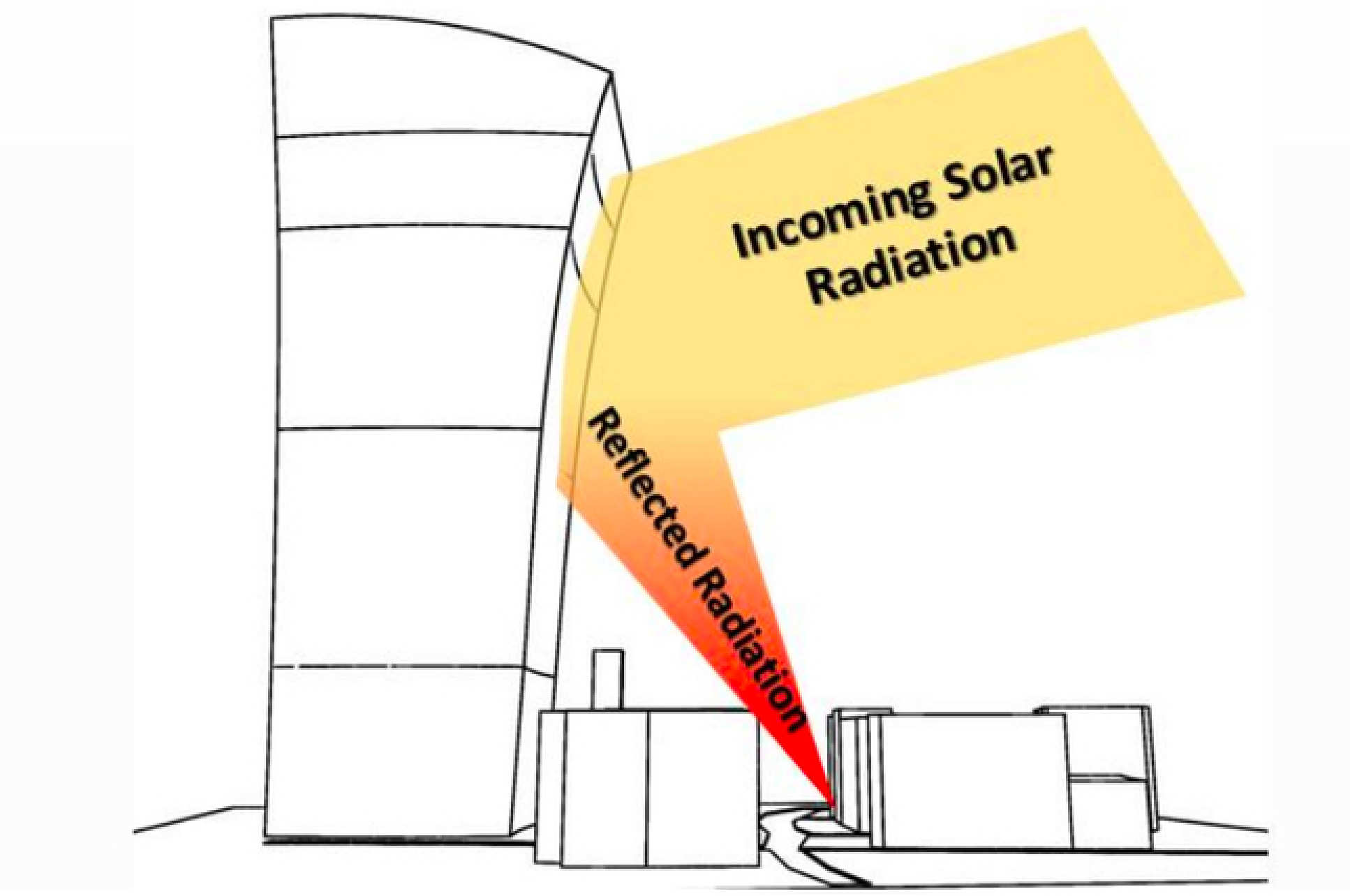Did British weather save the day from Walkie Talkie ‘death ray’?
In 2013, the City of London’s Walkie Talkie building, also known as 20 Fenchurch Street, ‘melted’ a car parked on the pavement outside.
In the worst-case scenario the intensity could've harmed people's skin and eyes, or charred the contents of nearby flats. Professor Guillermo Rein Department of Mechanical Engineering
The concave, highly reflective façade of the building helped to capture, concentrate, and reflect sun beams onto the street, producing a ray of intense radiation and heat that moved with the sun.
Carpets were charred, and City workers fried eggs in the street – but what could have happened if the beam had settled on a person?
Imperial College London’s Professor Guillermo Rein and his team ran computer simulations to find out just that. He said: “I wanted to know just how damaging the death ray could have been, had weather and climate conditions been different.”
Using computer simulations, the team from Imperial’s Department of Mechanical Engineering recreated the geometry of the so-called ‘Walkie Scorchie’ and nearby buildings.
They also simulated London’s climate at the time – such as cloud formation, weather, and the sun’s position in the sky – to recreate the exact conditions that led to the ray.
A ray of luck

The simulation showed that at its peak, the ray released up to 15 times more radiation than would be found at any other normal street in London, and twice what a human can withstand for thirty minutes before suffering skin damage.
Thankfully, the ray was strongest when it was aimed at rooftops – and for the rest of the day, its strength was thwarted by clouds. Had the sun been at a different position in the sky, or had there been fewer clouds, people might have been hurt, according to the study.
Professor Rein said: “By sheer luck, the beam didn’t cause anyone serious harm. The simulations showed that in the worst-case scenario the intensity could've harmed people's skin and eyes, or charred the contents of nearby flats.
“Cloud cover and the path of the ray, which did not fall on street level at its worst, helped avoid this worst-case scenario.”
After the incident, the designer altered the original facade and added shade to prevent further damage. Professor Rein’s study could help architects plan more carefully when designing reflective buildings – particularly in crowded cities.

“Computer simulation of sunlight concentration due to façade shape: application to the 2013 Death Ray at Fenchurch Street, London” by Jiajie Zhu, Wolfram Jahn & Guillermo Rein, published 22 November 2018 in the Journal of Building Performance Simulation.
Article text (excluding photos or graphics) © Imperial College London.
Photos and graphics subject to third party copyright used with permission or © Imperial College London.
Reporter
Caroline Brogan
Communications Division
Hayley Dunning
Communications Division